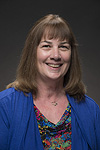Other people's money: partnering with industry
 |
|
Cherri Schmidt
|
Cherri Schmidt, head of OPTT, wrote this column.
One of my favorite movies about capitalism is the 1991 movie "Other People's Money." In it, the character Lawrence Garfield made this famous statement:
I love money. I love money more than the things it can buy. There's only one thing I love more than money. You know what that is? Other people's money.
Performing work for other institutions provides several important benefits to Fermilab. It allows the laboratory to maintain vital core capabilities during periods of transition without the loss of critical personnel. It provides us with access to new technologies and know-how that may be applicable to the laboratory's core science mission. It can allow the laboratory to expand its resources and capabilities in advance of known, future mission requirements. And it helps spread the overhead costs of operating the laboratory over a larger funding base.
There are two basic types of agreements that Fermilab uses to partner with industry. The first is the Strategic Partnership Projects (SPP) agreement, formerly known as Reimbursable Work for Others (WFO). This agreement is typically used when an industrial partner wants to access Fermilab's unique facilities or know-how to develop one of their own technologies for commercial application. Under this agreement, the industrial partner pays 100 percent of the costs of the work. In exchange, the partner is able to retain the right to own any inventions created in the process of performing the work and protect any generated data as proprietary. While these agreements make use of Fermilab's unique facilities and know-how, they typically do not contribute directly to Fermilab's scientific mission.
The second type of agreement is called the Cooperative Research and Development Agreement (CRADA). The CRADA provides a way for DOE laboratories to engage in collaborative research and development agreements with industrial partners for the mutual benefit of both Fermilab and the partner. Under this agreement, the lab and the partner may share the costs of performing the work, or the partner may pay 100 percent of the costs. The lab and the partner retain the right to elect their own inventions and will typically jointly own any inventions that they develop together under the agreement. The industrial partner also has the right to negotiate an exclusive license to laboratory inventions. And any data generated can be protected for up to five years. In contrast to an SPP, a CRADA must have a direct, programmatic benefit for Fermilab's scientific mission, such as developing and testing a new process for coating a cavity.
While the two agreement types have slightly different administrative and legal requirements, the responsibilities of the principal investigator (PI) for a proposed partnership project is much the same.
1. Secure the approval of your division, center or section head to work with the partner.
2. Work with your partner to develop a Statement of Work that clearly describes the scope, approach, schedule, deliverables and resources for the project.
3. Work with the field financial manager for your organization to develop a budgetary estimate that includes labor, materials and services, travel, and all appropriate overheads.
4. Enter the project into the Fermilab Environmental Review Form Database.
The Office of Partnerships and Technology Transfer (OPTT) will help guide you through the process, take care of the rest of paperwork and secure the appropriate laboratory and Department of Energy approvals. To get started with a new industrial partnership, contact OPTT at optt@fnal.gov to schedule an initial consultation.
|